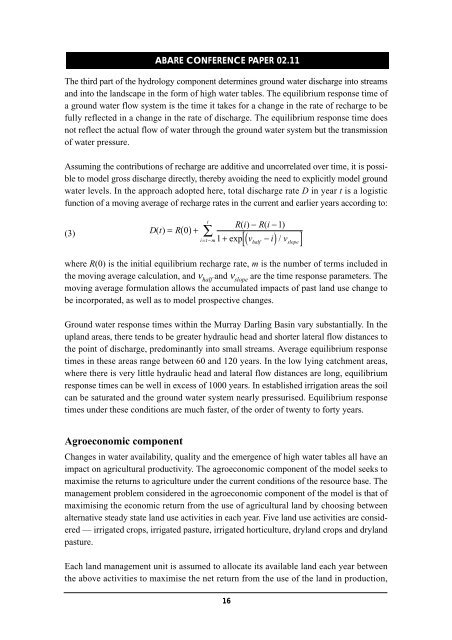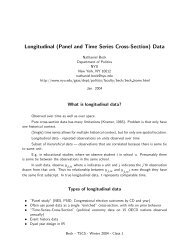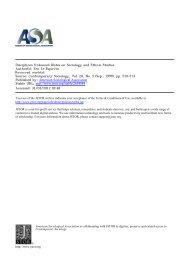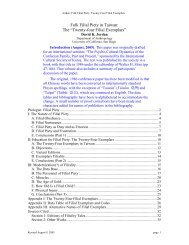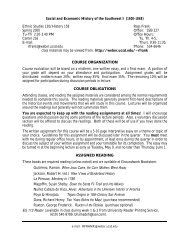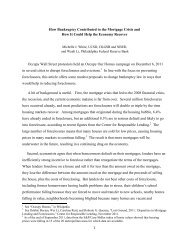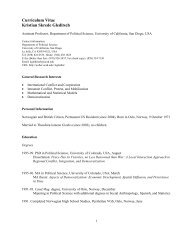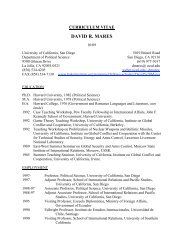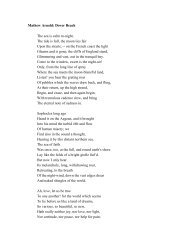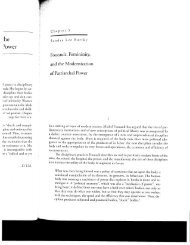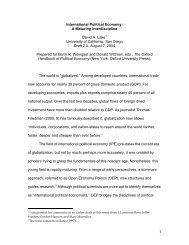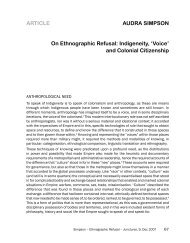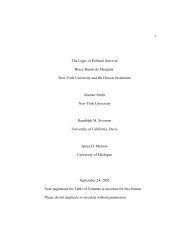Climate change and water resources in the Murray Darling Basin ...
Climate change and water resources in the Murray Darling Basin ...
Climate change and water resources in the Murray Darling Basin ...
Create successful ePaper yourself
Turn your PDF publications into a flip-book with our unique Google optimized e-Paper software.
ABARE CONFERENCE PAPER 02.11<br />
The third part of <strong>the</strong> hydrology component determ<strong>in</strong>es ground <strong>water</strong> discharge <strong>in</strong>to streams<br />
<strong>and</strong> <strong>in</strong>to <strong>the</strong> l<strong>and</strong>scape <strong>in</strong> <strong>the</strong> form of high <strong>water</strong> tables. The equilibrium response time of<br />
a ground <strong>water</strong> flow system is <strong>the</strong> time it takes for a <strong>change</strong> <strong>in</strong> <strong>the</strong> rate of recharge to be<br />
fully reflected <strong>in</strong> a <strong>change</strong> <strong>in</strong> <strong>the</strong> rate of discharge. The equilibrium response time does<br />
not reflect <strong>the</strong> actual flow of <strong>water</strong> through <strong>the</strong> ground <strong>water</strong> system but <strong>the</strong> transmission<br />
of <strong>water</strong> pressure.<br />
Assum<strong>in</strong>g <strong>the</strong> contributions of recharge are additive <strong>and</strong> uncorrelated over time, it is possible<br />
to model gross discharge directly, <strong>the</strong>reby avoid<strong>in</strong>g <strong>the</strong> need to explicitly model ground<br />
<strong>water</strong> levels. In <strong>the</strong> approach adopted here, total discharge rate D <strong>in</strong> year t is a logistic<br />
function of a mov<strong>in</strong>g average of recharge rates <strong>in</strong> <strong>the</strong> current <strong>and</strong> earlier years accord<strong>in</strong>g to:<br />
(3)<br />
Dt () = R(<br />
0)+<br />
t<br />
∑<br />
i= t−m Ri () − Ri ( −1)<br />
1 + exp v −i<br />
/ v<br />
[ ( half ) slope]<br />
where R(0) is <strong>the</strong> <strong>in</strong>itial equilibrium recharge rate, m is <strong>the</strong> number of terms <strong>in</strong>cluded <strong>in</strong><br />
<strong>the</strong> mov<strong>in</strong>g average calculation, <strong>and</strong> ν half <strong>and</strong> ν slope are <strong>the</strong> time response parameters. The<br />
mov<strong>in</strong>g average formulation allows <strong>the</strong> accumulated impacts of past l<strong>and</strong> use <strong>change</strong> to<br />
be <strong>in</strong>corporated, as well as to model prospective <strong>change</strong>s.<br />
Ground <strong>water</strong> response times with<strong>in</strong> <strong>the</strong> <strong>Murray</strong> Darl<strong>in</strong>g Bas<strong>in</strong> vary substantially. In <strong>the</strong><br />
upl<strong>and</strong> areas, <strong>the</strong>re tends to be greater hydraulic head <strong>and</strong> shorter lateral flow distances to<br />
<strong>the</strong> po<strong>in</strong>t of discharge, predom<strong>in</strong>antly <strong>in</strong>to small streams. Average equilibrium response<br />
times <strong>in</strong> <strong>the</strong>se areas range between 60 <strong>and</strong> 120 years. In <strong>the</strong> low ly<strong>in</strong>g catchment areas,<br />
where <strong>the</strong>re is very little hydraulic head <strong>and</strong> lateral flow distances are long, equilibrium<br />
response times can be well <strong>in</strong> excess of 1000 years. In established irrigation areas <strong>the</strong> soil<br />
can be saturated <strong>and</strong> <strong>the</strong> ground <strong>water</strong> system nearly pressurised. Equilibrium response<br />
times under <strong>the</strong>se conditions are much faster, of <strong>the</strong> order of twenty to forty years.<br />
Agroeconomic component<br />
Changes <strong>in</strong> <strong>water</strong> availability, quality <strong>and</strong> <strong>the</strong> emergence of high <strong>water</strong> tables all have an<br />
impact on agricultural productivity. The agroeconomic component of <strong>the</strong> model seeks to<br />
maximise <strong>the</strong> returns to agriculture under <strong>the</strong> current conditions of <strong>the</strong> resource base. The<br />
management problem considered <strong>in</strong> <strong>the</strong> agroeconomic component of <strong>the</strong> model is that of<br />
maximis<strong>in</strong>g <strong>the</strong> economic return from <strong>the</strong> use of agricultural l<strong>and</strong> by choos<strong>in</strong>g between<br />
alternative steady state l<strong>and</strong> use activities <strong>in</strong> each year. Five l<strong>and</strong> use activities are considered<br />
— irrigated crops, irrigated pasture, irrigated horticulture, dryl<strong>and</strong> crops <strong>and</strong> dryl<strong>and</strong><br />
pasture.<br />
Each l<strong>and</strong> management unit is assumed to allocate its available l<strong>and</strong> each year between<br />
<strong>the</strong> above activities to maximise <strong>the</strong> net return from <strong>the</strong> use of <strong>the</strong> l<strong>and</strong> <strong>in</strong> production,<br />
16


